Caged bird feeders are a popular choice for backyard bird enthusiasts looking to attract smaller songbirds while deterring larger, more aggressive species like European Starlings and Common Grackles. These feeders feature a protective metal cage with openings small enough for finches, chickadees, and wrens to enter, but too narrow for bullies. If you’re setting up social behaviour of birds in your yard, you might wonder which feathered friends will show up—and which unexpected guests could surprise you.
In my yard, I’ve observed a variety of birds adapting to these feeders over the years. The key is understanding their sizes, behaviors, and food preferences. Whether you’re filling them with sunflower chips, suet, or mealworms, caged bird feeders can draw in more than just the usual suspects.
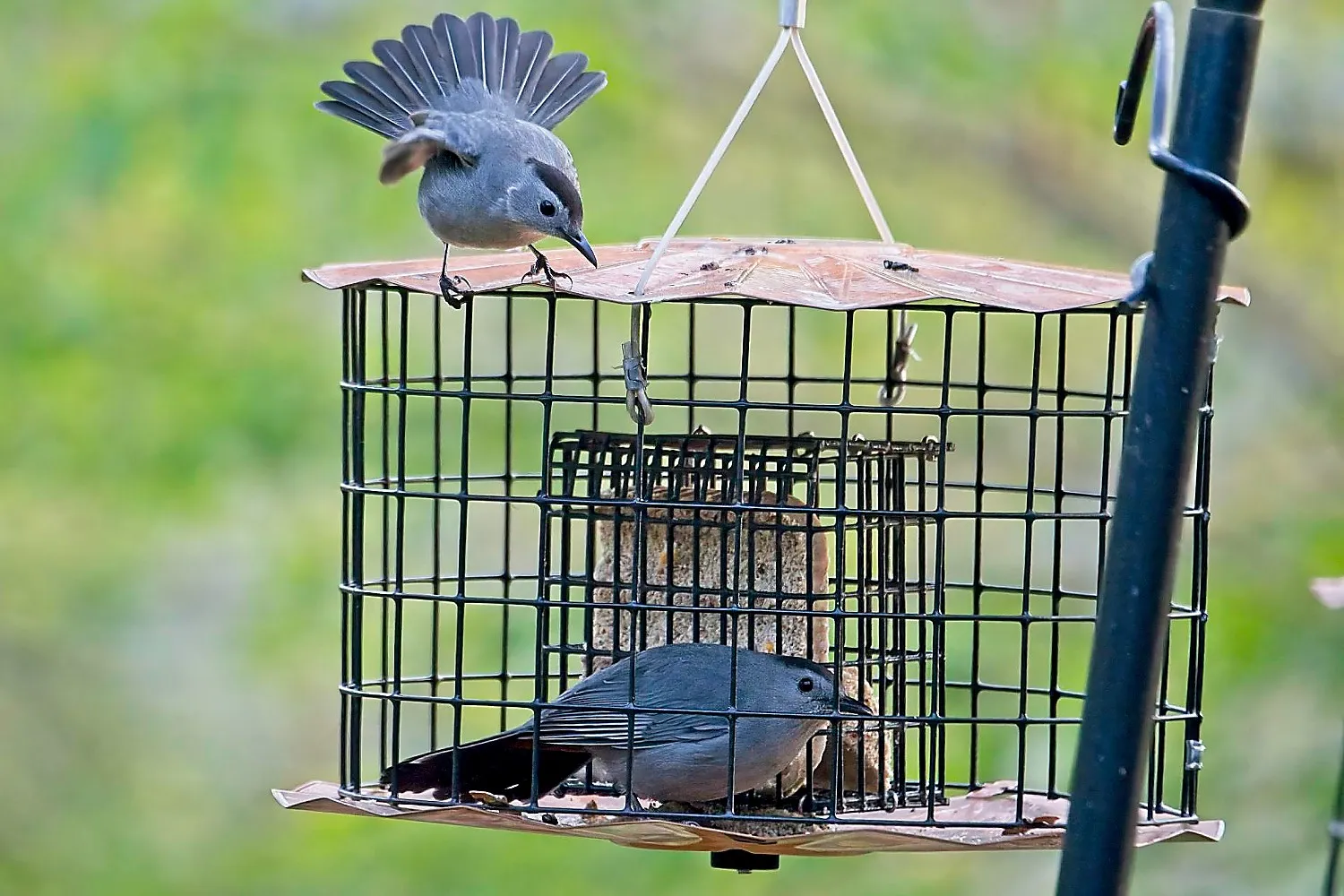 Gray Catbirds On and In a caged Feeder
Gray Catbirds On and In a caged Feeder
Types of Caged Bird Feeders I Recommend
I rely on two reliable models: the Woodlink Squirrel-Proof Seed Feeders and Erva Starling-Proof Feeders. The Woodlink features a sturdy plastic tube encased in a metal cage, perfect for holding sunflower chips that smaller birds love. Meanwhile, the Erva feeders come in drum shapes with customizable interiors, such as suet cages or mealworm bowls.
These designs effectively block squirrels and larger birds while allowing easy access for species like House Finches, American Goldfinches, Pine Siskins, Carolina Wrens, Chickadees, Nuthatches, Pine Warblers, Tufted Titmice, and even Eastern Bluebirds for mealworms. But patience pays off—some birds learn to navigate the cages through observation and trial.
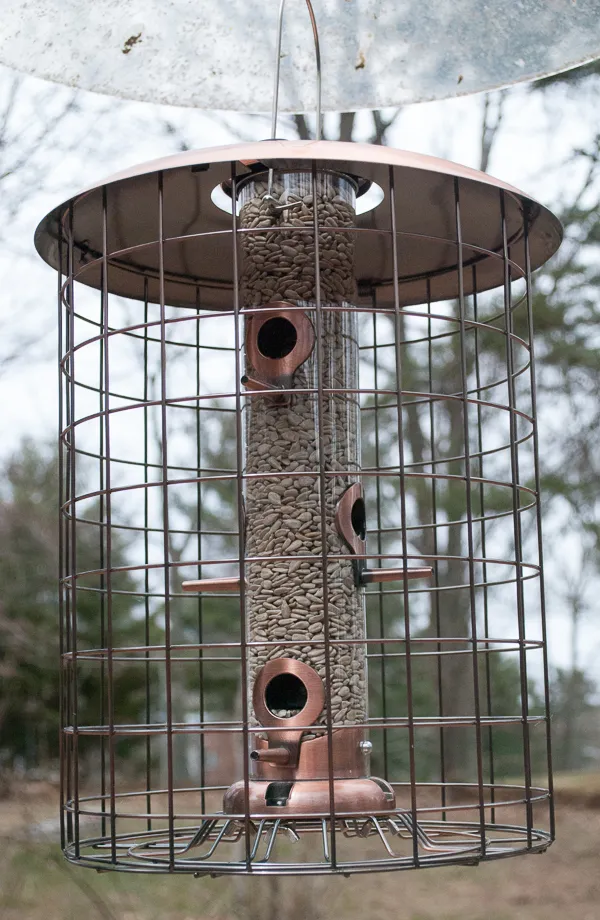 Woodlink Caged Seed Feeder
Woodlink Caged Seed Feeder
The food choice plays a big role too. Sunflower chips lure finches inside quickly, while suet and dried mealworms attract wrens and bluebirds. Over time, I’ve seen birds share techniques, turning occasional visitors into regulars.
Downy Woodpeckers Master Caged Feeders
Downy Woodpeckers, among the smallest woodpeckers, eventually discovered they could squeeze through the Woodlink cage to feast on sunflower chips. It took a few years, but once one mastered it, others followed suit. Their compact size—just right for the grid spacing—makes this possible.
These woodpeckers also thrive in my Erva Starling-Proof Suet Feeder, often preferring it over traditional upside-down suet options. Chickadees and wrens join them for quick suet bites, proving caged bird feeders support diverse feeding styles.
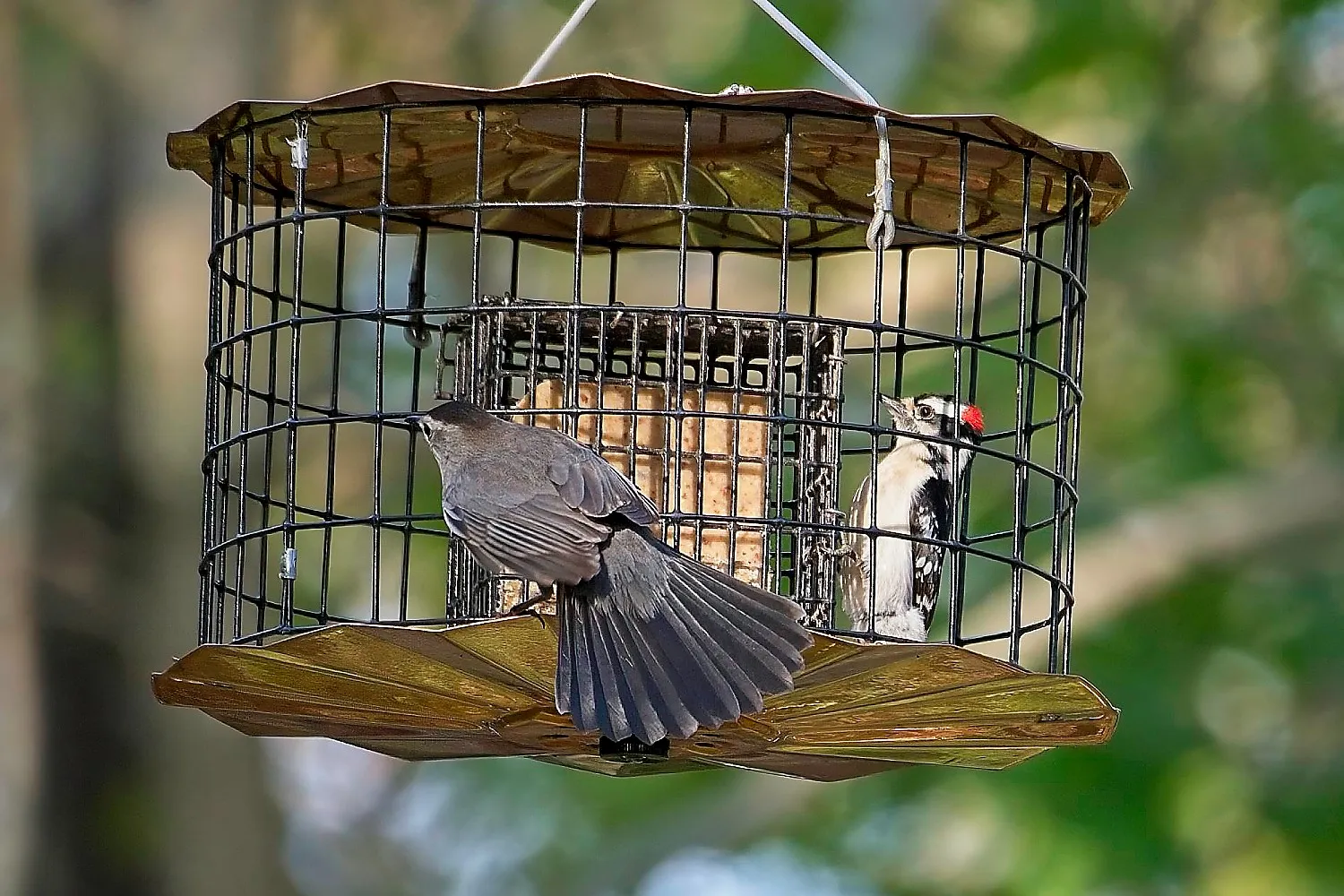 Gray Catbird and Downy Woodpecker On and In a Caged Suet Feeder
Gray Catbird and Downy Woodpecker On and In a Caged Suet Feeder
Red-Bellied Woodpeckers Get Creative
Larger Red-Bellied Woodpeckers can’t fit inside Woodlink cages, but they’re not deterred. They cling to the exterior, extending their long beaks and tongues through the grid to extract seeds from the ports. This resourceful technique highlights how determined birds adapt to caged bird feeders.
In my experience, this behavior persists year-round, especially with sunflower chips. It’s a reminder that while cages block entry, clever species find workarounds.
 Red-Bellied Woodpecker Pulling Seed From Outside a Caged Feeder
Red-Bellied Woodpecker Pulling Seed From Outside a Caged Feeder
Gray Catbirds Squeeze In for Suet
Gray Catbirds, typically transient spring visitors, rarely linger in my yard. They struggle with upside-down suet feeders, often settling for scraps below. However, one clever catbird recently slipped into the Erva caged suet feeder, dining comfortably before exiting.
Not all catbirds succeed—size and agility vary—but this shows how caged designs open suet to non-acrobatic birds. If you’re dealing with budgie aggression or similar territorial issues, these feeders promote peaceful feeding.
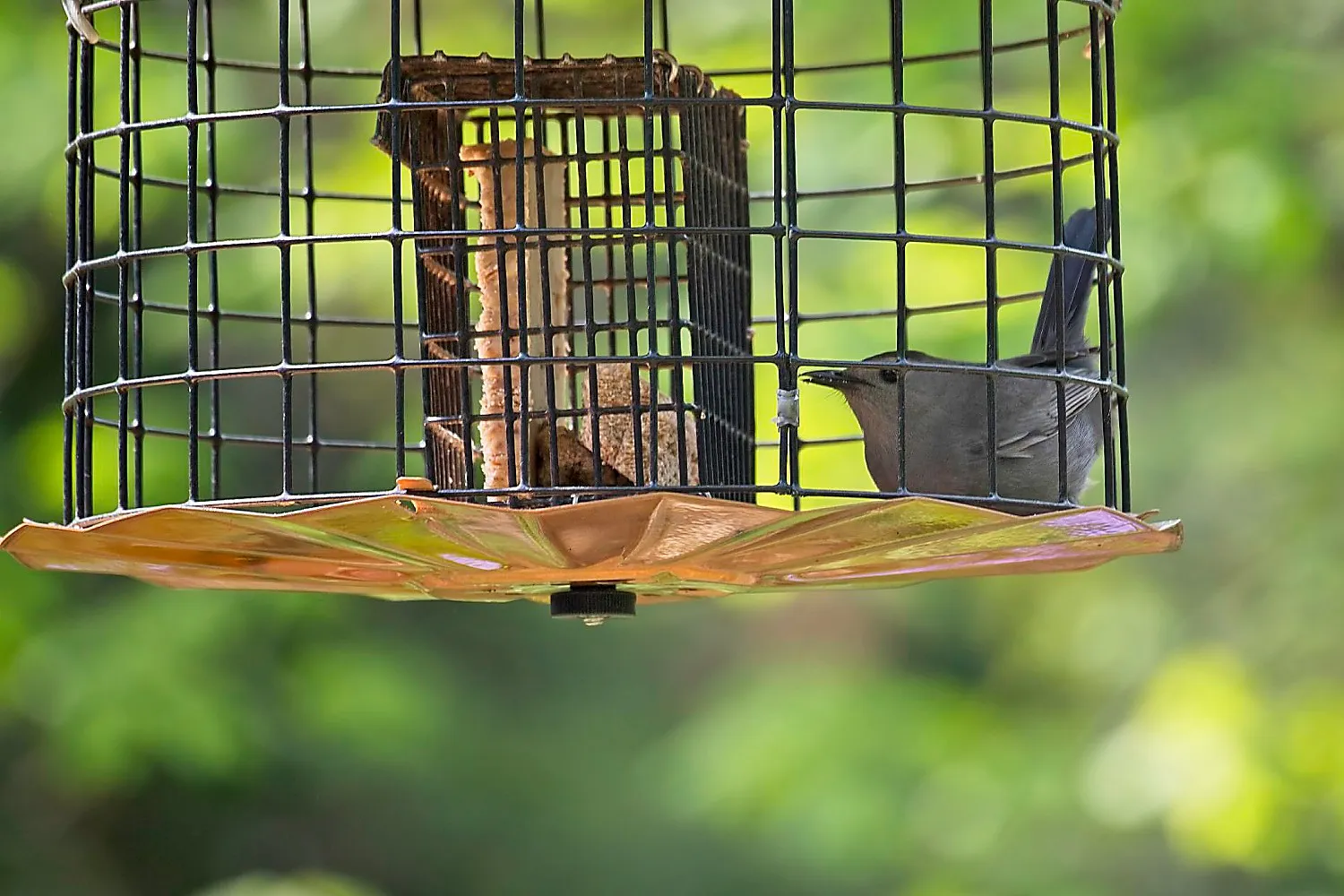 Gray Catbird in Caged Suet Feeder
Gray Catbird in Caged Suet Feeder
Chipping Sparrows’ Short-Lived Suet Interest
Chipping Sparrows, ground-foragers by habit, surprised me by entering the Erva suet feeder upon spring arrival. Unlike with upside-down feeders, the cage provided easy access for these tiny migrants needing quick energy post-journey.
Their visits tapered off after settling in, shifting back to seeds. This pattern underscores caged bird feeders’ role in transitional feeding.
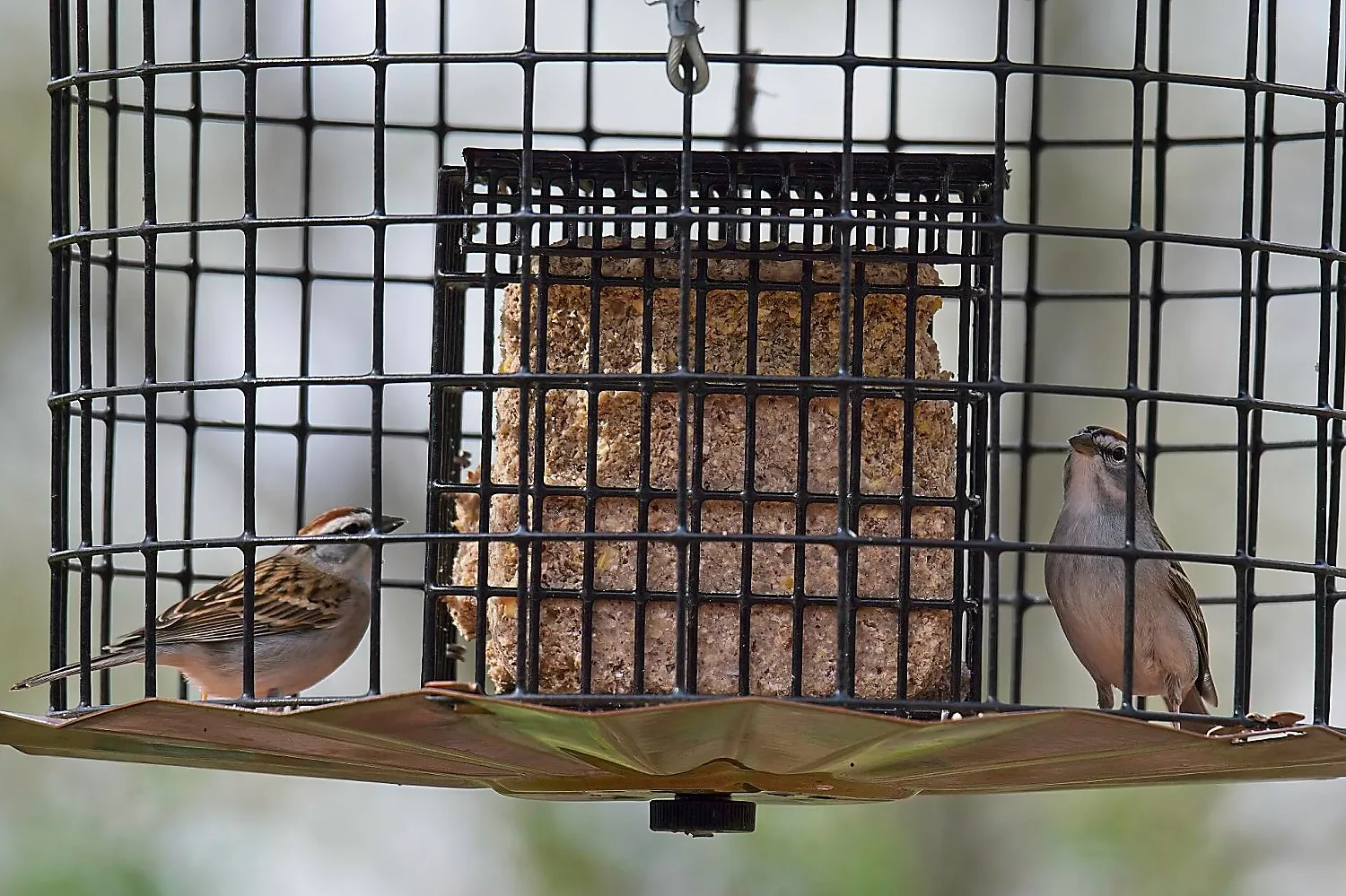 Chipping Sparrows Eating Suet
Chipping Sparrows Eating Suet
Aggressive Birds Stay Out
European Starlings and Common Grackles, the main targets for exclusion, remain frustrated outsiders. Despite persistent efforts, they can’t breach Woodlink or Erva cages—their beaks fall short of the food. They scavenge spills below but get nothing substantial.
Grackles lurk under feeders for dropped chips, reinforcing the cages’ effectiveness against bullies.
 European Starling Hanging Onto a Caged Feeder
European Starling Hanging Onto a Caged Feeder
Recent Updates and Other Visitors
Recent winters brought Dark-eyed Juncos into the mealworm Erva feeder, likely due to less ground seed. Spring saw gutsy House Sparrows entering cages—unusual for them—and ignoring nest box deterrents.
Food variety influences visitors: peanuts might draw nuthatches, while seeds favor finches. Check out more on pionus bird care for pet insights.
 Carolina Wren Eating Dried Mealworms
Carolina Wren Eating Dried Mealworms
What birds frequent your caged bird feeders? Share your food choices and observations in the comments—I’d love to hear!
In summary, caged bird feeders excel at selective feeding, welcoming small songbirds and surprises like woodpeckers and catbirds while repelling pests. Experiment with sunflower chips, suet, or mealworms to see what arrives in your yard. For tailored advice, consult resources like FeederWatch or local birding groups, and keep observing—these clever birds never cease to amaze.
